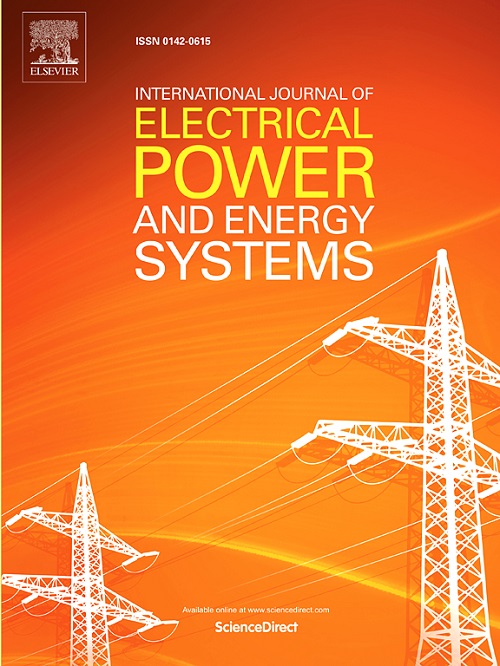Estimating area inertia of power systems with a high share of RES using deep learning
IF 5
2区 工程技术
Q1 ENGINEERING, ELECTRICAL & ELECTRONIC
International Journal of Electrical Power & Energy Systems
Pub Date : 2025-09-12
DOI:10.1016/j.ijepes.2025.111105
引用次数: 0
Abstract
Inertia, the ability to maintain frequency stability, is crucial for power system secure operation. With the increasing integration of inverter-interfaced renewable energy sources (RESs), represented by wind and solar power, the inertia of the power system rapidly declines and exhibits spatial–temporal variation. Estimating area inertia becomes more complex, yet more vital for power systems with high share of RESs. Most model-based inertia estimation approaches rely on a linearized and simplified representation to system frequency dynamics, limiting their accuracy in presence of large amount of virtual inertia provided by RESs due to its time-varying feature. Here, we propose time-series-based residual neural network (TS-ResNet), a deep learning model integrating one-dimensional convolution operation and residual blocks to estimate area inertia with a mix of synchronous inertia and virtual inertia. TS-ResNet extracts frequency dynamic features from nodal frequencies and tie-line powers utilizing probing signals without affecting system stable operation. Additionally, to enable model’s robustness to complex scenarios, a loss function with elastic net regularization is introduced for the training process. Numerical results on a 3-region AC/DC hybrid system demonstrate its high accuracy and low computation efficiency. It also generalizes to unseen time delays of virtual synchronous generators (VSGs), DC power transmission variations, and different RES shares, and demonstrates strong robustness under various noise levels. Our findings suggest that TS-ResNet offers a fresh perspective on incorporating data-driven approaches to inertia estimation.
基于深度学习的高RES电力系统面积惯性估计
惯性,即保持频率稳定的能力,对电力系统的安全运行至关重要。随着以风能和太阳能为代表的逆变器接口可再生能源(RESs)集成度的提高,电力系统惯性迅速下降,并呈现时空变化。面积惯性的估计变得更加复杂,但对于高RESs的电力系统更是至关重要。大多数基于模型的惯性估计方法依赖于对系统频率动力学的线性化和简化表示,由于其时变特性,存在RESs提供的大量虚拟惯性,限制了其准确性。在这里,我们提出了基于时间序列的残差神经网络(TS-ResNet),这是一种集成一维卷积运算和残差块的深度学习模型,用于估计同步惯性和虚拟惯性的面积惯性。TS-ResNet在不影响系统稳定运行的情况下,利用探测信号从节点频率和联络线功率中提取频率动态特征。此外,为了使模型对复杂场景具有鲁棒性,在训练过程中引入了弹性网正则化损失函数。对三区交直流混合系统的数值计算结果表明,该方法精度高,计算效率低。该方法还可以推广到虚拟同步发电机(VSGs)的未见时滞、直流输电变化和不同RES份额,并在各种噪声水平下表现出较强的鲁棒性。我们的研究结果表明,TS-ResNet为将数据驱动的方法纳入惯性估计提供了一个新的视角。
本文章由计算机程序翻译,如有差异,请以英文原文为准。
求助全文
约1分钟内获得全文
求助全文
来源期刊
CiteScore
12.10
自引率
17.30%
发文量
1022
审稿时长
51 days
期刊介绍:
The journal covers theoretical developments in electrical power and energy systems and their applications. The coverage embraces: generation and network planning; reliability; long and short term operation; expert systems; neural networks; object oriented systems; system control centres; database and information systems; stock and parameter estimation; system security and adequacy; network theory, modelling and computation; small and large system dynamics; dynamic model identification; on-line control including load and switching control; protection; distribution systems; energy economics; impact of non-conventional systems; and man-machine interfaces.
As well as original research papers, the journal publishes short contributions, book reviews and conference reports. All papers are peer-reviewed by at least two referees.

 求助内容:
求助内容: 应助结果提醒方式:
应助结果提醒方式:


